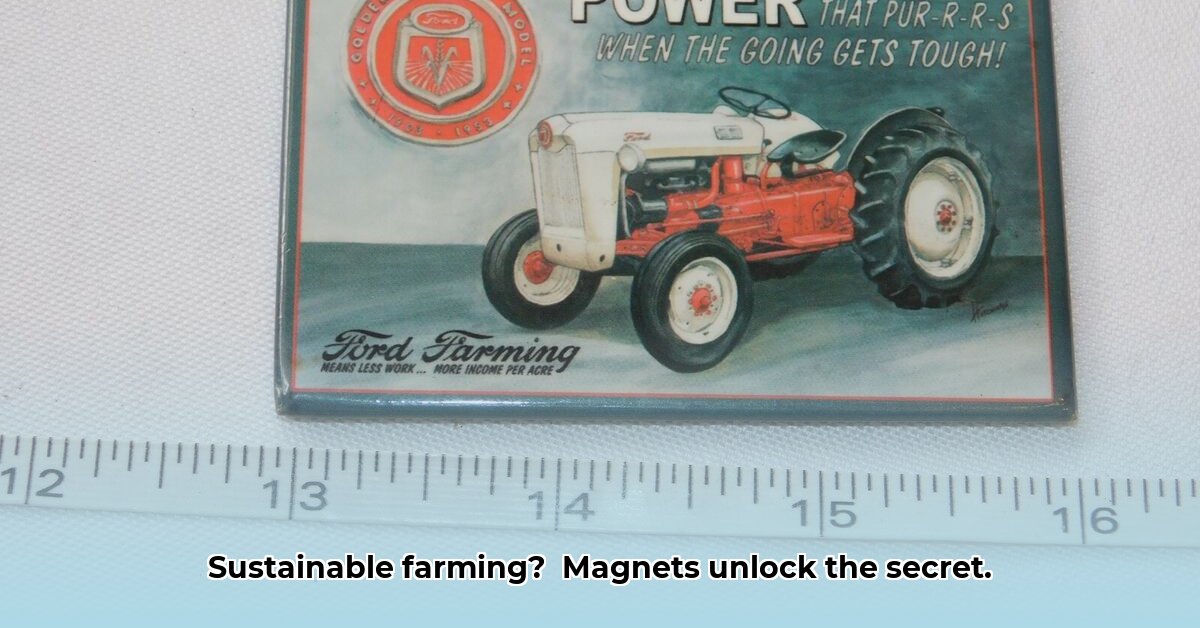
Magnets in Sustainable Agriculture: A New Frontier?
Forget the usual farming tools – let's talk magnets! While the idea might seem unconventional, magnets are showing potential in sustainable agriculture, offering exciting possibilities for increased efficiency and reduced environmental impact. This article will explore practical applications of magnets in farming, including sourcing magnets at Tractor Supply and other retailers, and guiding you through safe and effective implementation. But first, let's address a crucial question: Could a seemingly simple tool like a magnet truly revolutionize sustainable farming practices? The answer, while not definitively "yes" yet, is a promising "maybe." Early research suggests significant potential, particularly in soil remediation and irrigation optimization. For more on sourcing magnets, check out Tractor Supply magnets.
Finding the Right Magnets: Tractor Supply and Beyond
The first step is sourcing appropriate magnets. Tractor Supply and similar retailers often stock a range of magnets, from small, powerful neodymium magnets (ideal for small-scale projects) to larger, less powerful options for larger tasks. Selection depends on your specific needs: strength, size, and budget. Consult staff for advice; their expertise might surprise you. If your local store doesn't have what you need, online magnet retailers are another valuable resource. Remember, the right magnet is crucial for successful implementation; incorrect selection could lead to ineffective or even damaging results.
Unexpected Applications of Magnets in Sustainable Farming
While not a silver bullet, magnets hold potential across several areas of sustainable agriculture:
Soil Remediation: Magnets can potentially extract heavy metals or other contaminants from soil, leading to healthier soil and improved plant growth. This is an area of active research, with early studies showing encouraging results. The magnet size will depend on the soil volume; consider using multiple smaller magnets or a powerful electromagnet.
Precision Irrigation: The precise control of water flow in irrigation systems is another area of interest. Powerful magnets might improve irrigation accuracy. This minimizes water waste, conserves a precious resource, and increases efficiency. Magnet selection depends on your irrigation system's design. Prioritize thorough compatibility checks before purchase and use.
Future Pest Control Technologies: A promising, albeit still experimental, area involves exploring the use of magnetic fields to influence insect behavior. Though not currently a readily available solution, it’s a burgeoning research field offering potentially groundbreaking pest control methods in the future.
Enhancing Fertilizer Uptake: Research is underway on how magnets might improve a plant's ability to absorb fertilizer, potentially reducing fertilizer waste and maximizing yield while minimizing environmental impact. However, this application is still under development.
Weighing the Pros and Cons: A Realistic Assessment
It's vital to approach magnetic farming with realistic expectations. While the potential is significant, various challenges remain:
Advantages:
- Increased efficiency: Reduced water waste, fertilizer use, and pest damage translate to cost savings and resource conservation.
- Lower environmental impact: Less fertilizer and water usage contribute to a smaller environmental footprint.
- Potential yield increase: Healthier soil and better irrigation could potentially lead to higher yields, though this requires further research and validation.
Disadvantages:
- Initial investment costs: Specialized equipment using magnets often requires significant upfront investment.
- Specialized knowledge requirement: Effective use of magnets in agriculture requires specialized knowledge and expertise.
- Limited current applications: Many applications are still in the research stages, limiting practical applications for now.
Actionable Steps: Exploring Magnetic Farming Responsibly
Ready to explore the potential? Follow these steps for safe and effective implementation:
- Start Small: Begin with small-scale experiments (for example, soil remediation on a small plot) to assess feasibility and gauge effectiveness.
- Thorough Research: Consult peer-reviewed studies and credible sources to understand the specific applications you are interested in.
- Seek Expert Advice: Consult agricultural specialists or engineers experienced in magnetic technologies for guidance.
- Cautious Investment: Avoid large investments in untested technologies. Start with smaller-scale tests to build confidence and data before scaling up.
Magnets present intriguing possibilities in sustainable agriculture. Careful planning, thorough research, and realistic expectations are crucial for maximizing their benefits while mitigating potential risks. Your farm might play a significant role in shaping the future of magnetic farming.